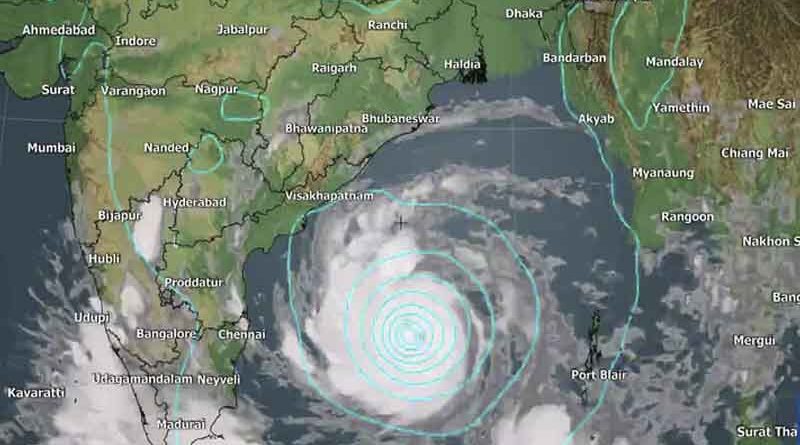Cyclone Amphan, which rose from the Bay of Bengal, has taken a very formidable form on Monday. At a rapid speed of 195 kilometers per hour, the Cyclone will knock off the coast of West Bengal on the evening of 20 May. Apart from West Bengal, its impact can be seen in the areas of Odisha, Bihar, Jharkhand, Chhattisgarh, Madhya Pradesh, and Uttar Pradesh.
Although the speed of the Cyclone reaching Madhya Pradesh will reduce to 35 to 40 km per hour, there will be a possibility of rain and hailstorm with strong winds. The Meteorological Department believes that this storm will knock over Madhya Pradesh in the next 24 hours.
However, rains and hailstorms with gusts of 35 to 40 km per hour can harm agriculture. Nowadays a huge amount of agricultural produce is reaching the market and procurement centers. Thousands of quintals of wheat are kept in open these days at procurement centers, which may damage. Along with the rains with strong wind, other vegetables including onions can also be damaged.
Farmers should take these precautions given the impact of cyclone
- At the ripening stage of summer mung bean crop either Start harvesting immediately or for proper management of drainage, dig a one-foot deep drain nearby so that the water does not stay in the field for long and the land dries quickly.
- After rain or as the first decomposer, spread 4 kg speed compost and 45 kg urea per acre in the field so that crop residue can rot quickly and increase soil fertility.
- To protect against diseases when the sky is clear after the storm, where the moong/urad crop is in a green state, 30 gm Thiophanate methyl 70% WP or 250 ml azoxystrobin 11% + tebuconazole 18.3 SC or 300 gm Chlorothalonil 75 WP Mix in 200 liters of water and spray at the rate of one acre.
- If the caterpillar appears, spray 100 ml lambda Cyhalothrin 4.6% + Chlorthanilyprol 9.3% ZC insecticide in 200 liters of water and spray it per acre.
- After harvesting, do not keep the product in an open field, keep it in a splash, room, warehouse or any place where rainwater does not come and when the sky is clear, dry it in a strong sun so that the moisture does not spoil the moong/urad grains.
- Properly manage the drainage in cotton and chilli nursery so that the water does not stay in the field for long.
- When the sky is clear, use fungicides in cotton and chilli nursery. In which 30 grams of Thiophanate methyl 70% WP or 30 grams of Metalaxyl 4% + Mancozeb 64% WP is sprayed with 15 liters of water. And to avoid pest attack, spray 100 gm Thiamethoxam 25% WG or 100 g acetamiprid 20% SP per acre with 200 liters of water.
- To manage the drainage well in the field of vegetables and to prevent disease, 300 gm Thiophinate Methyl 70% WP or 250 ml Azoxystrobin 11% + Tebuconazole 18.3 SC or 300 g Chlorothalonil 75 WP mixed with 200 liters of water Spray at the rate of one acre.
- When the pest is visible in the vegetable crop, spray 100 ml Lambda-cyhalothrin 4.6% + Chlorantraniliprole 9.3% ZC insecticide in 200 liters of water and spray it on the field per acre.




